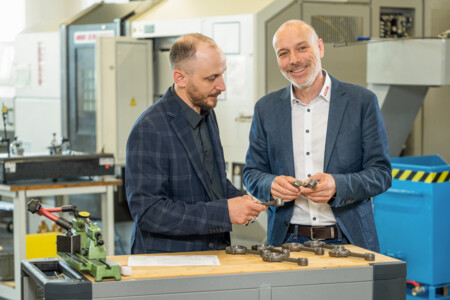





DEFA
Front and back chamfering of interrupted bores – even with large burrs – in one single pass
- Processing of demanding materials with large burr formation, without producing a secondary burr
- Dimensionally stable chamfer with high-quality chamfer surface
- Chamfering capacity continuously adjustable, depending on the bore dimension from 0.1 to 2.0 mm
- Standard range for bore diameter 4.0 mm – 23.9 mm

















